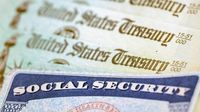Barbara Lammers never expected a bureaucratic mix-up to overshadow the grief of losing her father. Yet, in February 2025, just days after her father’s passing—so close to his 98th birthday—she found herself plunged into a financial nightmare. As she logged into his bank account to settle his affairs, she was stunned to discover that a full year’s worth of Social Security payments had vanished in a single day. Twelve large debits, all at once, had wiped out thousands of dollars that should have remained part of her father’s estate. The culprit? A simple, one-digit error in the Social Security Administration’s (SSA) records, which listed her father’s death as February 2024 instead of 2025.
“You hear stories out there about people dying and continuing to get payments,” Barbara told InvestigateTV. “Well, this is the opposite.” Instead of the government mistakenly sending money to a deceased person, the system had clawed back legitimate payments, leaving a grieving family scrambling for answers.
What followed was a lesson in the complexity—and sometimes, the exasperation—of navigating the Social Security system. Barbara’s calls to the SSA were met with daunting wait times: “There was an over two-hour wait,” she recalled. “The one time that I called before eight in the morning, that was only over a 90-minute wait.” And when she finally got through, she learned the issue couldn’t be resolved over the phone. She would have to wait another two and a half weeks for an in-person appointment at her local office.
At the appointment, SSA staff assured her that the error had been identified and the correct year of death was now reflected in their system. But, as Barbara soon discovered, fixing the paperwork didn’t mean the money would be returned right away. Weeks passed. The account remained empty. The stress mounted. “You just need this handled,” she said. “That’s a lot of money.”
Barbara’s ordeal is, unfortunately, not unique. According to Dana Marie Kennedy, AARP Arizona’s state director, such mistakes are rare but navigating the system can be confusing, especially for families already dealing with loss. “I think there absolutely is a lot of confusion,” Kennedy told InvestigateTV. AARP, she added, has been pushing for improved customer service at the SSA and resisting changes that could make it even harder for people to get help. “We want to make sure that with the Social Security Administration, that people are able to get the customer service that they deserve.”
After weeks of frustration and dead ends, Barbara’s luck changed when investigators reached out to the SSA on her behalf. While the agency cited privacy laws that prevented them from discussing the specifics of the case, a spokesperson promised to “reach out to Ms. Lammers directly and assist.” Shortly after that call, the money—every penny from those 12 months—was returned to her father’s account.
Barbara decided to share her story as a warning: “I just wanted to get the word out that mistakes happen,” she said. “That hurt us, the innocent people.” Her advice for others? Act quickly, document everything, and don’t be afraid to escalate your case if you hit a wall.
This cautionary tale comes at a pivotal moment for Social Security recipients nationwide. On September 30, 2025, a major change will sweep through the system: the federal government will stop issuing paper checks for Social Security payments, moving entirely to electronic payments. According to the Social Security Administration, about 590,000 recipients—roughly 0.8% of all beneficiaries—still receive their payments by check. That era is about to end, with the White House announcing the transition back in March as a way to cut costs and boost security.
“The first recipient of Social Security was a woman named Ida May Fuller, who received the first Social Security check on Jan. 31, 1940, for $22.54,” Richard Himelfarb, a Hofstra professor and expert on the politics of Social Security, told Newsday. “Here we are in 2025, and paper is finally going away completely. Life moves on.”
For those still relying on paper checks, the SSA and U.S. Treasury Department have outlined several paths forward. Recipients can opt for direct deposit, sending funds straight to a bank or credit union, or use a prepaid debit card called Direct Express. For those without a bank account, the Direct Express card offers a practical alternative. And for anyone needing to open a bank account, the Federal Deposit Insurance Corporation (FDIC) website provides resources to help locate participating banks.
Enrolling in electronic payments is designed to be straightforward, though, as Barbara’s experience suggests, bureaucracy can be daunting. Beneficiaries can call the Treasury’s Electronic Payment Solution Center at 800-333-1795, visit their local bank or credit union, call the SSA directly at 800-772-1213, use the Treasury’s Go Direct website, or mail a completed FS Form 1200 to the Go Direct Processing Center in Dallas, Texas.
But what if someone truly can’t make the switch? The Treasury says waivers may be granted on a case-by-case basis, especially for those over 90 years old, individuals with mental impairments, or people living in very remote locations. To request a waiver, beneficiaries can call 855-290-1545 or mail the necessary paperwork to the Treasury’s Electronic Payment Solution Center. For Veterans Affairs payments, federal law still allows recipients to receive paper checks if they choose, according to VA press secretary Pete Kasperowicz.
The shift to electronic payments is part of a broader push by the Trump administration to modernize federal benefit systems, save taxpayer money, and combat financial fraud. But for some recipients, the move is bittersweet. Richard Hite, a retired accountant from Islip, told Newsday that while he already receives his Social Security via direct deposit, he’s uneasy about the trend. “The idea of putting my account information out there where people can grab it, it bothers me,” Hite admitted. Others in his circle, especially those without computers, are anxious about navigating the new system.
The SSA and Treasury emphasize that acting promptly is the best way to ensure a smooth transition and avoid payment delays. They recommend keeping meticulous records—documenting every call, visit, and piece of correspondence. For those who miss the September 30 deadline, payments could be delayed, so making the change in advance is crucial.
For families like the Lammers, the experience is a reminder that even in a digital age, human error and system glitches can have real consequences. But with vigilance, persistence, and a willingness to ask for help, most issues can be resolved—though sometimes not as quickly as anyone would like.
As paper checks fade into history and the Social Security system moves forward, beneficiaries—old and new—will need to adapt. But with the right information and support, they can navigate these changes and safeguard the benefits they’ve earned over a lifetime.




